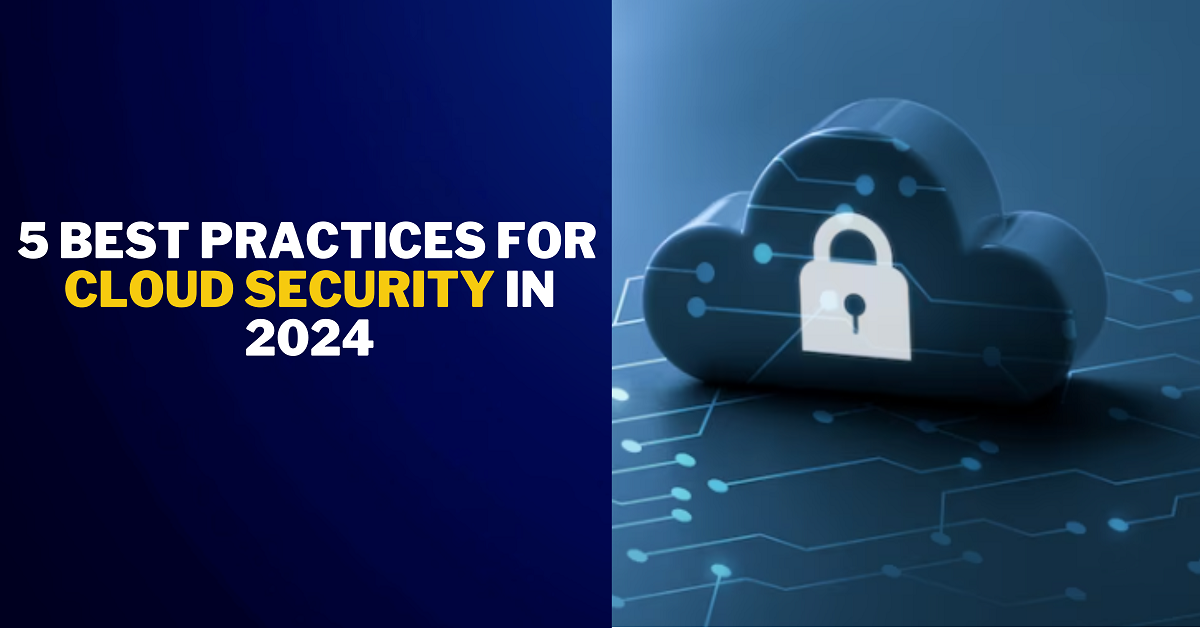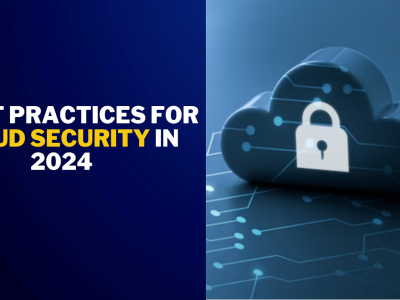5 Best Practices for Cloud Security in 2024

Imagine a bustling marketplace – not one with cobbles and carts, but one woven from data, humming with algorithms and powered by the cloud. It’s a vibrant realm where businesses trade ideas, customers find treasures, and innovation thrives. But just like any vibrant marketplace, it attracts not just honest merchants, but cunning thieves and shadowy figures lurking in the digital alleyways. They seek not gold or jewels, but something far more valuable – the very lifeblood of this digital bazaar: our information, our secrets, our trust. In this tale of the cloud, cloud security is not just a lock on a shop door, but an intricate web of vigilance, awareness, and proactive defense against those who would exploit this digital commons for their own gain. This is the story of why, in the ever-expanding realm of the cloud, safeguarding our digital haven is not just a technical challenge, but a collective responsibility and an ongoing adventure.
Said about the information, and data online, the increasing trend of organizations transitioning their data and applications to the cloud, ensuring security becomes paramount. Despite the robust security measures employed by cloud service providers, the shared responsibility model emphasizes the need for proactive measures to secure your cloud environments effectively. Cloud computing has revolutionized the way we store data, run applications, and conduct business. Its scalability, agility, and cost-effectiveness are undeniable. However, with great power comes great responsibility, and cloud security demands constant vigilance.
As we gear up for 2024, let’s explore five best practices to fortify your cloud defenses and maintain a robust security posture.
1. Embrace Zero Trust Security
Gone are the days of perimeter-based security. In today’s dynamic cloud landscape, a “never trust, always verify” approach reigns supreme. Zero trust security implements stringent access controls, continuously verifying user identities and device health before granting access to any cloud resource. This multi-layered approach minimizes the attack surface and prevents lateral movement even if an initial breach occurs.
Think of it like this: Instead of guarding a castle gate, zero trust builds a series of checkpoints and identity scanners throughout the kingdom, ensuring only authorized individuals reach sensitive areas.
2. Secure Your Cloud Access with CASBs
Cloud access security brokers (CASBs) act as gatekeepers, inspecting and controlling all traffic between your organization and the cloud. They enforce security policies, provide visibility into cloud usage, and prevent unauthorized access and data leaks. In a multi-cloud world, CASBs are indispensable for unifying security controls and maintaining consistent visibility across diverse cloud environments.
Imagine a CASB as a vigilant security guard at every cloud entry point, checking credentials, scanning for threats, and preventing unauthorized access.
3. Prioritize Data Security and Governance
Data is the lifeblood of any organization, and its security in the cloud is paramount. Implement robust data encryption (at rest and in transit), granular access controls, and data loss prevention (DLP) solutions to safeguard sensitive information. Regularly assess your data classification, retention policies, and compliance with relevant regulations like GDPR and HIPAA.
Think of data security as building a secure vault for your precious jewels, with multiple layers of locks, alarms, and access controls to keep them safe.
4. Secure Your Infrastructure as Code (IaC)
IaC automates cloud infrastructure provisioning, but insecure IaC scripts can introduce vulnerabilities. Implement secure coding practices, leverage static code analysis tools, and enforce least privilege principles to ensure your IaC configurations are airtight. Remember, security should be baked into the infrastructure from the very beginning.
Imagine IaC security as building a house on a solid foundation, free from cracks and hidden weaknesses, ensuring the entire structure is secure.
5. Foster a Culture of Security Awareness
Cloud security is not just a technical challenge; it’s a cultural one. Educate your employees about cloud security best practices, phishing scams, and social engineering tactics. Encourage a culture of reporting suspicious activity and empower individuals to be the first line of defense against cyber threats.
Think of security awareness as building a community watch program, where everyone is vigilant and collaborates to keep the neighborhood safe.
Bonus Tip: Leverage the Power of AI and Automation
Artificial intelligence (AI) and machine learning (ML) are valuable tools for cloud security. AI can analyze security logs, detect anomalies, and identify potential threats in real-time. Automation can streamline tedious tasks like patch management and vulnerability scanning, freeing up your security team to focus on strategic initiatives.
Remember, AI and automation are like having extra security personnel and high-tech surveillance equipment, providing continuous monitoring and rapid response capabilities.
By implementing these best practices, you can confidently navigate the ever-evolving cloud security landscape in 2024. Remember, cloud security is not a one-time fix; it’s an ongoing journey. Continuously assess your security posture, adapt to new threats, and invest in security tools and training to stay ahead of the curve. With vigilance and proactive measures, you can ensure your cloud environment remains a safe and secure haven for your data and applications.
Stay Secure, Stay Vigilant, and Embrace the Cloud with Confidence!
- Decoding Generative AI: A Comprehensive Guide to Gartner’s Impact Radar - January 2, 2024
- 5 Best Practices for Cloud Security in 2024 - December 29, 2023
- 10 Best Machine Learning Ops Strategies for Cloud Environments in 2024 - December 29, 2023
